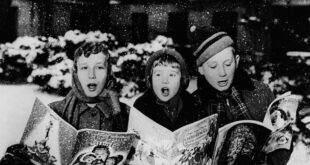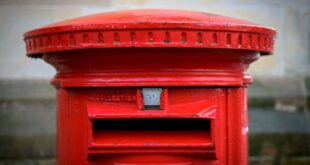There are so many places in the outer zones of London that didn’t used to be part of the city.
Over time, the city’s surrounding counties have shrunk as areas on the fringes have been absorbed into London.
The county of Middlesex was dissolved and was all but absorbed into London , with a few remaining parts given away to neighbouring Hertfordshire and Surrey.
Meanwhile, parts of Essex became controlled by the London boroughs of Havering, Redbridge, Waltham Forest and Barking and Dagenham.
And similar patterns were seen south of the river, with Kent and Surrey losing towns to the likes of Croydon and Bromley.
Here’s some of the towns that have been gobbled up by the city.
Essex
(Image: Dan Kitwood/Getty Images)
So many areas of East London used to be part of Essex. These are some of the main ones, as first reported by Essex Live .
Hornchurch
Hornchurch was historically an agricultural town in the west of Essex, until the industrial East End of London started changing the town. It’s now part of the London Borough of Havering.
Romford
Lots of people will still think of this historic market town as being part of Essex.
Romford underwent a period of population growth prior to World War Two, meaning it got largely engulfed by London suburbia.
It now falls under the jurisdiction of the London Borough of Havering.
Ilford
The suburban expansion of London also saw Ilford claimed from Essex.
It had been part of Essex until 1965, when it became part of the London borough of Redbridge.
Loughton
The majority of Loughton’s residential area currently sits within the historical district of Epping Forest.
Although Loughton still comes under the jurisdiction of Epping Forest District, it is also part of the Greater London Urban Area and has a London Underground Tube station.
Barking
The arrival of the London Underground back in 1908 saw Barking develop into a more industrial landscape and it is now part of the London borough of Barking and Dagenham.
Dagenham
Dagenham was a mostly undeveloped and tranquil parish in Essex until 1921, when the London County Council began constructing the Becontree Estate – it’s now part of London suburbia.
West Ham
West Ham grew rapidly in the 1840s to become a large Victorian manufacturing area and by 1901, it was the ninth most-populous district in the country and was the most western point governed by Essex County Council.
West Ham is now overseen by the London Borough of Newham.
Kent
So many towns have been lost to London, Kent Live reports .
These are just a few of the most major ones that have been incorporated into the capital.
Woolwich
Woolwich became part of the London metropolitan area in the mid-19th century, though it was officially still in Kent at the time.
A vital part of the First World War, the Royal Arsenal Munitions Factory employed thousands of women to work on the assembly line.
Greenwich

(Image: Getty)
Home to some of the grandest houses in London, was part of Kent until 1889, when the County of London was established.
Plumstead
After the Battle of Hastings in 1066, William the Conqueror gifted Plumstead to his brother, whom he also titled Earl of Kent.
This town jumped on the London bandwagon in the mid 19th century.
Belvedere
Known for the Belvedere explosion of 1864, Belvedere is also one of the many districts that London has added to the growing city.
Biggin Hill
Home to the famous air show, Biggin Hill was an ancient parish in Kent but became a municipal borough in 1935. By 1965, London County Council was replaced by Greater London Council and Biggin Hill became part of South London.
Beckenham

(Image: Lewisham Council)
Also formerly part of Kent, Beckenham used to be a tiny village, with the vast majority of its land being rural.
Timber merchant John Cator and his family began to build villas which resulted in a rapid increase in its population between 1850 and 1900, from just 2,000 to 26,000.
Petts Wood
Most of Petts Wood was built in the early 20th century as a high quality estate in an extremely rural setting, just a short trip away from the big city.
Erith
After the London Government Act, Erith became part of the London Borough of Bexley.
During the demolition process, many of the original Victorian buildings were lost, but some of the original townscape remains – clearly clinging on to every last bit of Kentish history.
Bexleyheath
Bexleyheath was another of the towns that was scooped up by London in the London Government act and placed in the borough of Bexley.
Sidcup
The ancient district allegedly had its name derived from Cetecopp, meaning “seat shaped or flat-topped hill.”
Sidcup parish formed the Sidcup Urban District of Kent from 1908. Formerly known as Foots Cray, the urban town was renamed Sidcup.
Eltham
Eltham was a civil parish of Kent until 1889 when it became part of the county of London and from 1900 formed part of the metropolitan borough of Woolwich.
Bromley
A former market town, Bromley now has a huge range of shops and to many still feels more like its own town than as part of London.
You won’t be shocked to hear that the town of Bromley is in the borough of Bromley.
Orpington
Right on the south eastern outskirts of London, Orpington is now part of the borough of Bromley.
You can’t get much closer to being in Kent without being in Kent.
Surrey
So much of what we now consider to be South London actually once formed part of Surrey.

Croydon
In 1965 the district was officially absorbed into London and was called the London borough of Croydon within Greater London.
The Royal Mail still places many addresses in Croydon within Surrey which just adds to the confusion.
Purley
One of the parts of Croydon where many residents will argue until their dying breath that it remains part of Surrey.
It is, though, within the borough of Croydon. Sorry folks!
Coulsdon
Right at the south of Greater London this is another part of Croydon that many residents will still see as being in Surrey.
One survey suggested that six in 10 Croydon residents still say they live in Surrey rather than Croydon.
Kingston upon Thames
From 1893 to 1965, Kingston was actually part of Surrey before it became one of the 32 London boroughs of Greater London.
Merton
Although Merton is a borough in South West London, this wasn’t always the case.
The borough was formed in 1965 by merging together the municipal boroughs of Mitcham and Wimbledon, and the Merton and Morden urban district, all formerly within Surrey.
Sutton
When Sutton was connected to Central London by rail in 1847, it began to grow into a town, and it expanded further in the 20th century.
It became a municipal borough with Cheam in 1934, and became part of Greater London in 1965.
Source link



